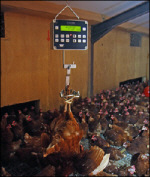



Flock Health - Using Your Senses
UK - Producers are only too well aware that the costs of investigating production and mortality problems in free range laying flocks can be an expensive business.
Often extensive diagnostic tests may be required to solve the problem. However, a huge amount of information about flock health, or otherwise, can be gained by just using your senses as you carry out daily checks within your chicken house.
Most people don't even realise how much information they are gathering while just walking through the flock.
The best person to judge the health of your stock is you, the producer. After all, you see the birds every day, you know your chickens and their little habits (no two flocks are ever the same!), so what can your senses tell you?
Sight.
Bird characteristics:
You can see at a glance what the birds are doing and where they are and can easily note any change in behaviour, for example, if birds are failing to range as they normally would or birds are crowding in one area of the shed. If you see something unusual, then you can investigate.
What do the birds look like? Birds should be alert, active and inquisitive. You should be looked for good comb colour, good comb development, tight healthy feathering. By looking at the flock, you can see how birds are moving. Is there any lameness present? Can you see any signs of skin damage, feather loss which might indicate a pecking or a parasitic problem? Look carefully at the feathering of the birds. Feather scoring is a useful guide to bird welfare and can be used as part of a welfare assessment. Can you see any signs of skin damage or feather loss which might indicate a pecking or a parasitic problem?








